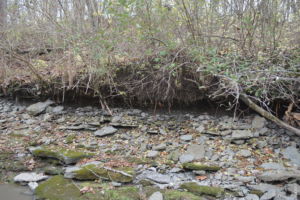Introduction
Ice floating on water is a phenomenon that has intrigued scientists and nature enthusiasts for centuries. It may seem like a simple observation, but the underlying reasons behind this occurrence are quite fascinating. In this article, we delve into the science behind why ice floats on water, uncovering the secrets hidden within this seemingly ordinary occurrence.
The Density Dilemma
At first glance, one might assume that ice, being a solid, would sink in liquid water. After all, most solids are denser than their liquid counterparts. However, ice defies this expectation by floating on water’s surface. The key to understanding this lies in the unique nature of water’s density.
The Mysterious Structure of Ice
Ice is formed when water molecules arrange themselves in a crystalline lattice structure. This arrangement creates a network of hydrogen bonds, which are relatively weak but numerous. These hydrogen bonds give ice its solid form and contribute to its unique properties.
The Density Dance
When water freezes into ice, the hydrogen bonds force the water molecules to spread out and form a lattice with empty spaces. These spaces result in a lower density compared to liquid water. As a result, ice is less dense than water, allowing it to float.
The Importance of Hydrogen Bonds
Hydrogen bonds play a crucial role in the density of water. Unlike most substances, water reaches its maximum density at around 4 degrees Celsius. As the temperature drops further and water freezes, the hydrogen bonds cause the water molecules to arrange themselves in a way that increases the space between them, decreasing the overall density.
Post
Post
The Consequences of Ice Floating
The fact that ice floats on water has significant implications for the environment and living organisms. Firstly, this phenomenon helps to insulate bodies of water during colder seasons. As the air temperature drops, the ice layer that forms on the surface acts as a barrier, preventing further heat loss from the water below.
Additionally, the floating ice plays a vital role in the distribution of nutrients. When ice forms on freshwater bodies, it traps various organic and inorganic materials within its structure. As the ice floats and eventually melts, these trapped nutrients are released back into the water, providing essential sustenance for aquatic life.
Conclusion
Ice floating on water is not merely a random occurrence; it is a result of the intricate dance between hydrogen bonds and the unique properties of water. The lower density of ice compared to liquid water allows it to defy expectations and float effortlessly. This phenomenon has far-reaching consequences for the environment and plays a vital role in maintaining the delicate balance of ecosystems. So the next time you witness a sheet of ice floating on water, take a moment to appreciate the underlying science and marvel at the wonders of the natural world.



